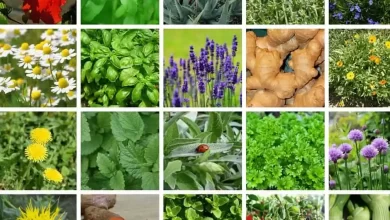Elk Horn: [Cultivation, Irrigation, Care, Pests and Diseases]
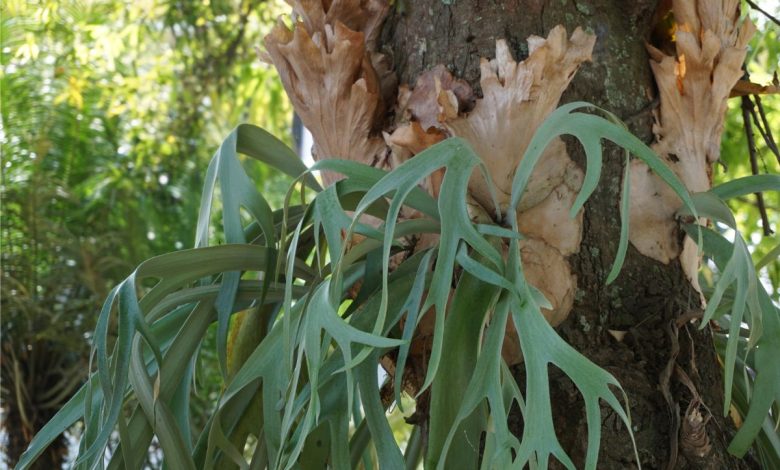
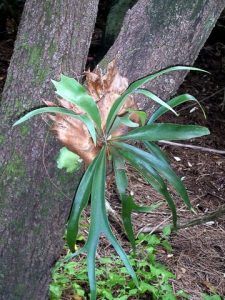 The elkhorn is an indoor plant, family of the ferns, but whose texture is far from what we commonly know.
The elkhorn is an indoor plant, family of the ferns, but whose texture is far from what we commonly know.
Its name is due to the shape of its leaves, which resemble the horns of certain animals, such as the elk.
It has an ideal structure to keep it in a hanging position, embellishing any space, especially areas such as terraces.
In places where there is a constant temperature, between 20 and 25º C, it can also be kept outdoors.
Do you want to know, step by step, everything you need to do to enjoy your own elkhorn at home?
Go ahead because here we will tell you.
Important points when planting an elkhorn
- When? In spring.
- Where? In a place with indirect sunlight.
- How do we prepare the land? Use garden soil.
- How should we water? By immersion.
- How often do you have to water? Every 15 days in summer or 21 days in winter.
- What pests and diseases does it have? Cochineal and red spider.
When to plant elkhorn?
The best time to plant the elk antlers is during the spring , where there will be better conditions to work with the suckers.
Where to plant an elkhorn?
In an appropriately sized pot, placing it in an area where it receives indirect sunlight .
How to prepare the land?
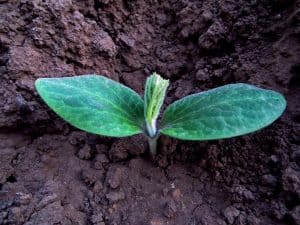 The elkhorn does not need intensive care to thrive, so the use of good quality gardening soil will be more than enough .
The elkhorn does not need intensive care to thrive, so the use of good quality gardening soil will be more than enough .
However, to help the soil maintain moisture for longer, a good recommendation is to mix it with coconut fiber.
How do we water elkhorn?
The correct way to carry out the procedure is by means of immersion, which consists of submerging the pot in a larger container filled with water .There are two important points to take into account:
- The depth must be such as to ensure that the water penetrates the pot, but does not reach the leaves, due to the risk of rotting.
- A special fern fertilizer can be applied during the summer months.
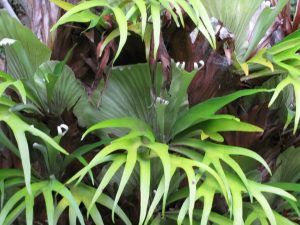 The immersion will have to last at least an hour for the plant to be able to maintain its humidity until the next day.
The immersion will have to last at least an hour for the plant to be able to maintain its humidity until the next day.
After that, you have to allow it to drain well before putting it back in place.
And although it is a demanding process, the reality is that the elkhorn is not capable of surviving on dry land.This will result in the equivalent of this irrigation system being to conscientiously carry out a daily one.
How often should we water elkhorn?
Elkhorn watering should be done once every two weeks because it is not a very fanatical species of humid environments.
Of course, this frequency will apply during the months of higher temperatures.When it comes to autumn or winter, the process can be executed every three weeks without problems.
How to plant an elkhorn step by step?
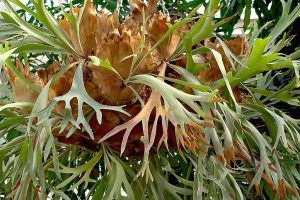 Being a fern, elkhorn can reproduce through spores. However, it is a complex process and one that does not always offer good effectiveness.
Being a fern, elkhorn can reproduce through spores. However, it is a complex process and one that does not always offer good effectiveness.
For this reason, the most recommended method is the division of the suckers that are usually born on older plants.To achieve this sowing, the procedure will be as follows:
- Extract the entire root ball from the pot where the plant is established in order to facilitate the division of the plant.
- Separate the sucker very carefully because this is a species that usually has very thin roots and that gives a certain level of delicacy to the process.
- Fill a good-sized pot with gardening soil enriched with coconut fiber (the larger the pot, the more chances the plant will develop comfortably and abundantly) and plant the sucker, taking care not to stir it too much so that it does not break the leaves. estate.
- Add the extra soil that is needed to complete the total of the pot, without the need to press excessively, only what is necessary to avoid the accumulation of air.
- Water carefully , using an appropriate amount of water in this first phase to ensure that the plant settles well.
- Locate in a cool space where it is able to receive a good amount of diffused sunlight.
What care does the elkhorn need?
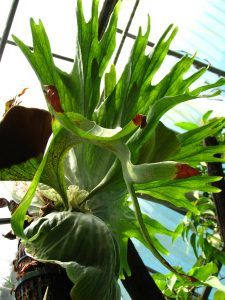 The elkhorn is not very demanding in terms of care as is the case with other species. Here what will determine good health will be proper irrigation .
The elkhorn is not very demanding in terms of care as is the case with other species. Here what will determine good health will be proper irrigation .
As we have seen above, the fertilizations will be applied during the immersion process with a special product for ferns.
This is because it is a plant that only emits foliage (without flowers or fruits) and our function is to keep it healthy.
Another important precaution is to keep it in the shade because excessive sun will burn its leaves and the vitality of the plant will gradually be lost.
As for pruning, this will only be necessary when leaves are in poor condition or the growth of the plant is being excessive.The process can be carried out efficiently using gardening shears and removing the leaves from the part closest to the stem of the plant.
What pests and diseases attack elkhorn?
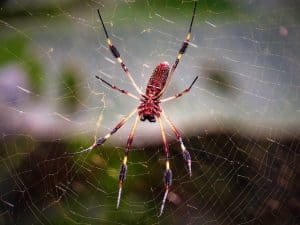 The cochineal and the red spider are the main enemies of the elkhorn , but they only affect it if it is very dry.
The cochineal and the red spider are the main enemies of the elkhorn , but they only affect it if it is very dry.
When doing the dipping process, people who are unfamiliar with the process could wet the leaves causing them to rot.
But the mistake that occurs most frequently in its cultivation is related to cleaning the leaves , which is usually done with a damp cloth.
This, in addition to filling the leaves with moisture (which, as we have seen, is not convenient) also removes the protective hair that they have.For many people, ferns are plants of the highest value and having them at home is a real pleasure, so the elkhorn can easily become a favorite.
What do you say? Do you dare to enjoy a copy at home?

![Photo of How to Fertilize a Lemon Tree: [Components and Needs]](https://www.complete-gardening.com/wp-content/uploads/2022/08/how-to-fertilize-a-lemon-tree-components-and-needs-390x220.jpg)
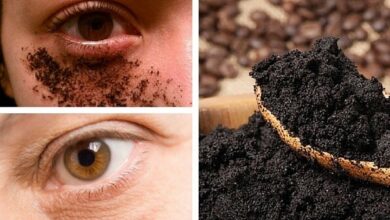
![Photo of Teucrium: [Cultivation, Irrigation, Associations, Pests and Diseases]](https://www.complete-gardening.com/wp-content/uploads/2021/06/Teucrium-planta-390x220.jpg)
